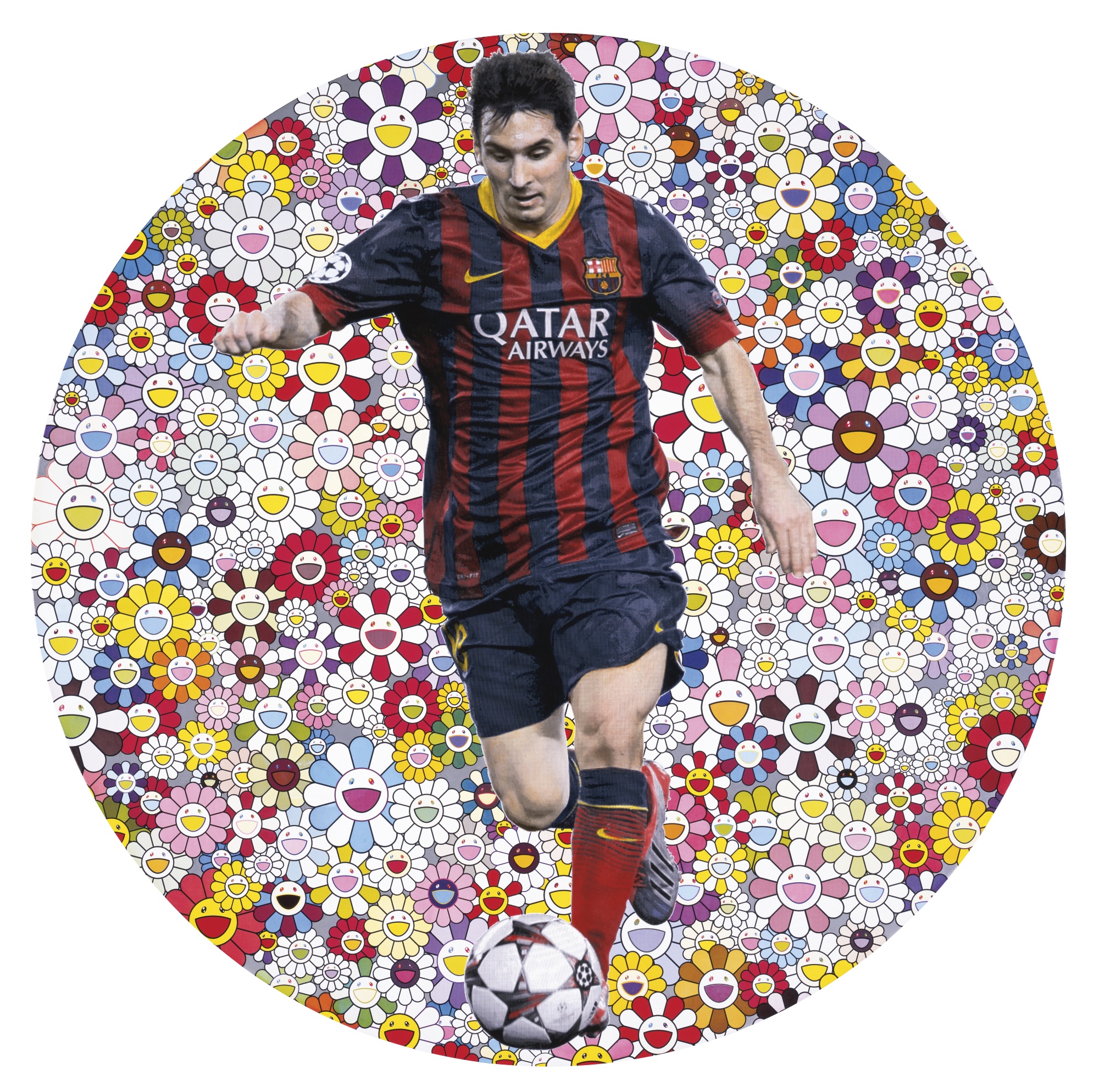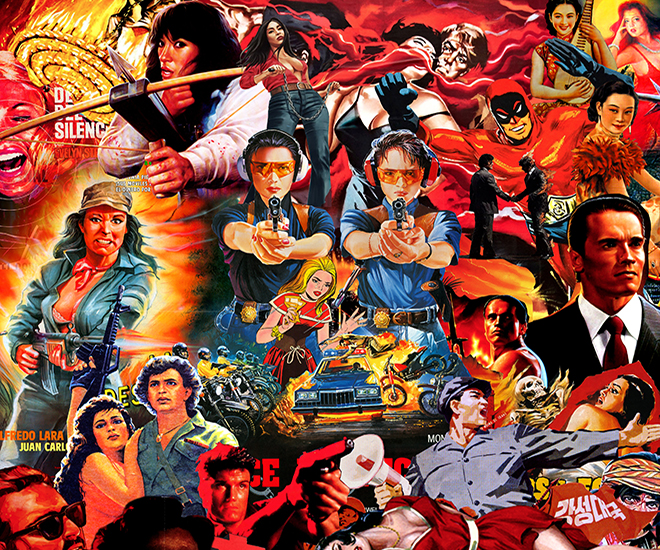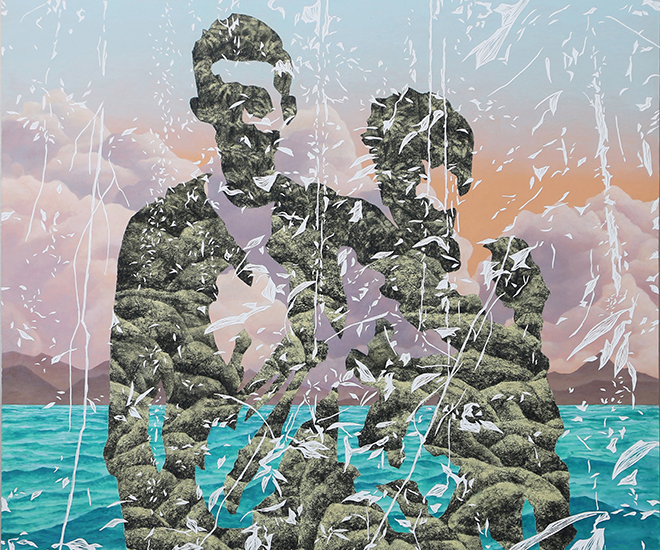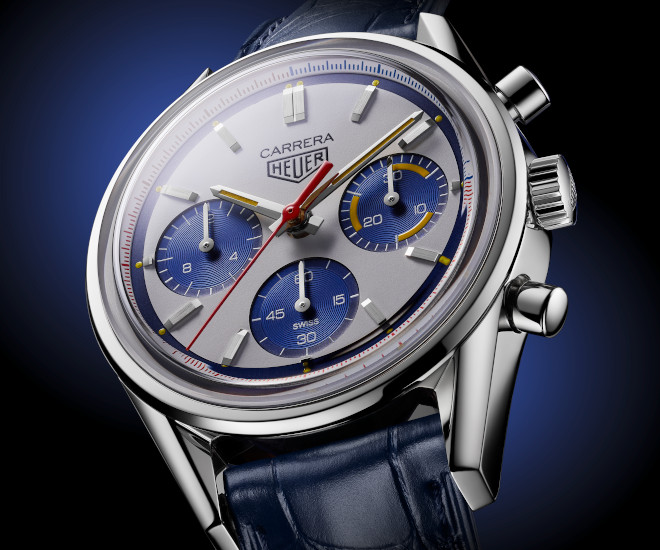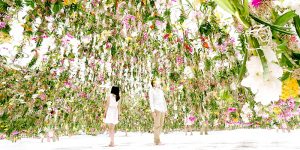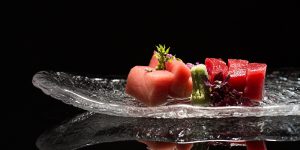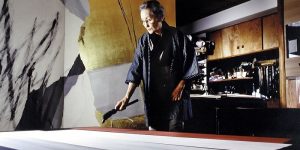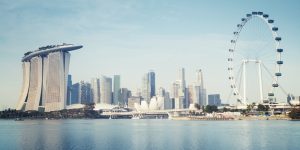8 Top Selling Artists 2015
A who’s who of the world’s best-selling artists in 2015, as compiled by our friends at Art Republik
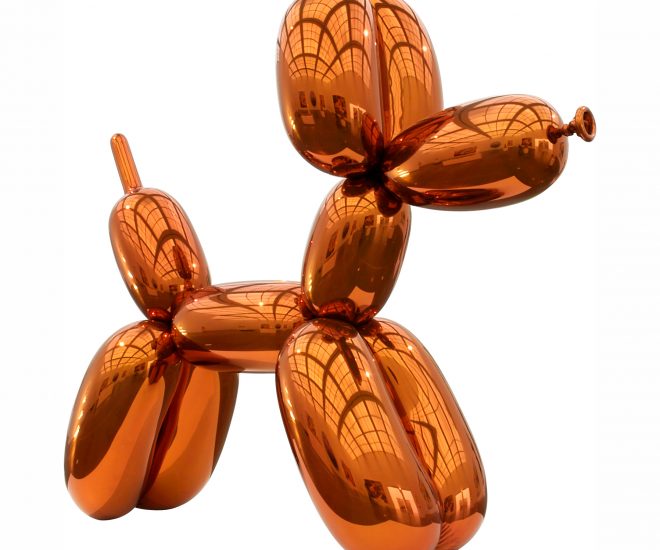
Often anticapitalist by nature and sometimes offering scathing critiques of socio-economic systems, contemporary art is paradoxically highly sought-after for its commercial potential. While classics famously hold their value well enough to be considered an asset class, contemporary art – where the artist is frequently alive and still working – is required to demonstrate its potential at auction regularly. Of course, the value of most contemporary art is nebulous but therein lies the excitement.
Our friends at Art Republik give us the low-down on eight living artists whose best-selling work combined nets more than USD150 million…
Jeff Koons
Jeff Koons was born in 1955 in York, Pennsylvania, United States of America. He received his B.F.A. from the Maryland Institute College of Art in 1976. Koons is known for his exploration of contemporary consumer culture in his oeuvre. His series of works include “Equilibrium” (1985), which feature ready-made basketballs floating in distilled water in tanks made of glass and steel, “Banality” (1988), mostly sculptures of toys and popular icons rendered in porcelain and polychromed wood, and “Made in Heaven” (1989-1991), centered around photorealist paintings and sculptures of the artist engaged in sexual intercourse in varied positions with his ex-wife Ilona Staller, an adult film star.
Koons’ “Balloon Dog” sculptures in five color versions – blue, magenta, yellow, orange and red – are probably among his most well known works. These are from the “Celebration” series, which presents giant mirror-polished stainless steel sculptures with transparent color coating.
The artist has pioneered new techniques for the making of his artworks. For the “Celebration” series, for example, he collaborated with Arnold AG, a metalwork mill in Germany to make the sculptures’ high-shine surface. In addition, he used the CAT scan, typically used in hospitals, to get an all-round imaging of subjects so that the enlarged versions could be reproduced to perfection. He also has a unique way of working. Koons’ works are made in a studio that employs more than 100 assistants who fabricate his work.
“Balloon Dog (Orange)”2008 was a particularly productive year for Koons, with solo exhibitions at Château de Versailles, France, Museum of Contemporary Art, Chicago, The Metropolitan Museum of Art, New York, and Neue Nationalgalerie, Berlin. More recently, in 2014, “Jeff Koons: A Retrospective”, was held at the Whitney Museum of American Art. It has now traveled to the Centre Pompidou, Paris, and will be at the Guggenheim Museum Bilbao later in the year.
Koons’ first million-dollar work sold was the “Pink Panther” (1988) from the “Banality” series, which transacted at Christie’s in 1999 for USD1.8 million (1988). In 2013, he became the most expensive living artist when “Balloon Dog (Orange)” sold for USD52 million at Christie’s. He holds the title to this date.
Koons lives and works in New York.
In Brief
- Age: 60
- Nationality: American
- Gallery Representation: David Zwirner Gallery, Gagosian Gallery, Galerie Jérôme de Noirmont, Galerie Max Hetzler
- Big Break: Koons’ “Banality” series (1988), featuring the work, “Michael Jackson and Bubbles”, exhibited at the Sonnabend Gallery in New York City in 1989.
- Most Expensive Work Sold: “Balloon Dog (Orange)”, 1994-2000, mirror-polished stainless steel with transparent color coating, 307.3 x 363.2 x 114.3cm. Price including buyer’s premium: USD58.4 million. Sold at Christie’s, New York, November 2013
Zeng Fanzhi
Zeng Fanzhi was born in Wuhan, China in 1964. He graduated from Hubei Academy of Fine Arts in 1991, where he specialized in oil painting.
Before moving to Beijing in 1993, he began painting the “Hospital” series, showing tableaus from the hospital, and the “Meat” series that contrast human beings with butchered meat, inspired by the hospital and the butcher’s shop he lived next to. From these first works, the characters began to be drawn with disproportionately larger hands, which persisted into his “Mask” series.
Zeng Fanzhi is probably best known for his paintings in this series of figures standing in groups or alone, wearing white masks with big smiles. This was motivated by his interactions with people in the capital of China, whom he thought hid their true identities and feelings from others and perhaps from themselves as well, in a representation of the Chinese people’s feelings of isolation in the decade after the Tiananmen Square protests in 1989.
An adventurous artist who has experimented with different styles, Zeng began drawing landscapes in 2004, mostly covered with bare intertwining branches, inspired by the unexpected beauty he saw in a pot of Chinese wisteria in his studio. He also painted portraits of luminaries in western culture such as Francis Bacon and Andy Warhol in 2010.
“The Last Supper”, 2001, oil on canvas, 220 x 395 cm.Zeng first set a new world auction record for Chinese contemporary art in May 2008, when his diptych Mask Series 1996 No. 6 sold for USD9.7 million at Christie’s in Hong Kong. This featured eight members of the Young Pioneers, the Communist Party’s youth movement, wearing their representative red scarves, and Zeng’s signature masks. In 2013, his painting, “The Last Supper” sold for USD23 million at Sotheby’s. He remains the most expensive living Asian artist.
In the same year, the Musée d’Art Moderne de la Ville de Paris presented the first French retrospective of 40 paintings and sculptures from Zeng made between 1990 and 2012.
Zeng lives and works in Beijing.
In Brief
- Age: 51
- Nationality: Chinese
- Gallery Representation: Gagosian Gallery, Acquavella Galleries, Gallery Hyundai, ShangArt, Hanart TZ Gallery
- Big Break: Fresh out of art school, paintings from Zeng Fanzhi’s “Hospital” series were selected by Johnson Chang from Hanart TZ Gallery based in Hong Kong to be included in an exhibition at Hong Kong Arts Centre in 1993 titled “China’s New Art, Post-1989”. This introduced the artist to the art community, and at the same time gave Zeng tremendous encouragement to continue pursuing his career as an artist.
- Most Expensive Work Sold: “The Last Supper”, 2001, oil on canvas, 220 x 395 cm. Price including buyer’s premium: USD23.3 million, Sotheby’s Hong Kong, October 2013
Takashi Murakami
Takashi Murakami was born in 1962 in Tokyo, and received his BFA, MFA and PhD from the Tokyo University of the Arts, formerly the Tokyo National University of Fine Arts and Music.
A multi-hyphenate, Murakami is involved in many aspects of the art world, and works as an artist, a gallerist, a curator and an art theorist, among others. He founded the Hiropon factory in Tokyo in 1996 for the production of his works, which later evolved into Kaikai Kiki Co., Ltd., an art production and art management corporation. In addition to the production and marketing of Murakami’s art and related work, it manages and promotes emerging artists.
Murakami has organized several influential exhibitions based on the theory of a tradition of a pervasive superflat look in contemporary Japanese visual culture, typified by manga, which refer to comic books, and anime, which refer to animation, that tend towards two-dimensionality. The first exhibition, titled simply “Superflat”, was held at Parco Gallery in Tokyo and Nagoya. It subsequently traveled to MoCA gallery in the Pacific Design Centre in Los Angeles, Walker Art Center, Minneapolis, and Henry Art Gallery, Seattle, in 2001. He has followed up with exhibitions such as “Coloriage” at the Fondation Cartier pour l’art contemporain in Paris in 2002 and “Little Boy: The Art of Japan’s Exploding Subcultures” at the Japan Society in New York in 2005.
A pioneer in art-fashion collaborations, Murakami began working with Louis Vuitton in 2003. He first created the “Monogram Multicolore”, which featured the “LV” monogram in 33 bright colors. Since then, he has made special prints for the luxury fashion house’s leather goods that incorporate motifs such as cherry blossoms and pandas. In 2008, the limited edition “Monogramouflage” collection, for all products from iPhone cases to luggage, featured a juxtaposition of the khaki and beige camouflage print and the Louis Vuitton monogram.
Takashi Murakami, “Lionel Messi and a Universe of Flowers,” 2014, acrylic and platinum leaf on canvas laid down on board, 70 7/8 x 70 7/8 in
A notable recent exhibition is “Takashi in Superflat Wonderland” at the PLATEAU Samsung Museum of Art in Seoul Korea in late 2013, where some of the artist’s most iconic works were on display, including one of the artist’s “Superflat Flowers” sculptures made in 2010. Also in the exhibition was a fiberglass sculpture of “Miss Ko2”, a buxom character created by Murakami as a commentary on otaku culture, an obsession with anime and manga, and the resultant desire to have these unreal characters come to life.
Not content to rest on his laurels, Murakami is constantly innovating. In 2013, he released his first feature film, “Jellyfish Eyes”, which mixes live action with cartoon characters, with plans for a sequel.
Murakami lives and works in Tokyo.
In Brief
- Age: 53
- Nationality: Japanese
- Gallery Representation: Gagosian Gallery, Blum & Poe, Galerie Perrotin, Kaikai Kiki Gallery
- Big Break: Murakami had an international traveling retrospective, “©Murakami”, showing over 90 works by the artist that kicked off at The Museum of Contemporary Art (MOCA), Los Angeles in 2008. In an interview in W Magazine in April 2013, Murakami said that this exhibition was a turning point in his career, stating that he thought the conventional view before the exhibition was that he was merely an artist influenced by Japanese subculture. The exhibition was persuasive of the strength of his artworks to have a place in art history.
- Most Expensive Work Sold: “My Lonesome Cowboy”, 1998, oil, acrylic, fiberglass, iron, 254 x 116.8 x 91.4cm. Price including buyer’s premium: USD15.1 million, Sotheby’s, New York, May 2008
Tracey Emin
Tracey Emin was born in London in 1963, and studied at Maidstone College of Art and the Royal College of Art, London, where she earned her Master’s degree in 1989.
Emin’s art is inspired by her personal life. Her artworks reflect universal emotions and are both relatable and confrontational. These are created in wide range of mediums, including, painting, photography, textile, video, installation and sculpture.
In 1999, Emin was shortlisted for the Turner Prize, an annual prize awarded to a British visual artist below the age of 50. This was for her provocative work, “My Bed”, an installation of the artist’s bed complete with liquor bottles, cigarette butts, worn underwear, condoms and rumpled stained bedsheets, the scene of a post-breakup breakdown.
Among other works by Emin are her “I’ve Got It All” photograph from 2000 showing the artist seated on the floor with ample cleavage, her legs wide open, bills and coins pressed against her crotch. She is also known for her neon light installations, which she has produced since the 1990s, featuring evocative messages such as “You Forgot to Kiss My Soul” (2001) and “You Loved Me Like a Distant Star” (2012).
Tracey EminEmin has exhibited extensively. In 2007, she represented Britain at the 52nd Venice Biennale. The first major retrospective exhibition of Emin’s work opened at the Scottish National Gallery of Modern Art in 2008, and traveled to Centro de Arte Contemporáneo de Málaga, Spain and the Kunstmuseum Bern, Switzerland. In May 2011, Emin had a major survey exhibition, “Love is What You Want” at the Hayward Gallery in London.
Emin currently lives and works in London.
In Brief
- Age 52
- Nationality British
- Gallery Representation Lehmann Maupin, White Cube
- Big Break Charles Saatchi’s “Sensation” exhibition at the Royal Academy, London included Emin’s much-discussed work “Everyone I Have Ever Slept With 1963-1995”, which was a tent embroidered with over 100 names of people she had slept with, including 32 lovers, and 80 people she had only slept next to.
- Most Expensive Work Sold “My Bed”, 1998, mattress, linens, pillows, objects, 79 x 211 x 234 cm. Price including buyer’s premium: USD4.3 million, Christie’s, London, July 2014
Gerhard Richter
Gerhard Richter was born in 1932 in Dresden, Germany. He studied at the Staatliche Kunstakademie, or the State Academy of Art, in Düsseldorf under the eminent German artist Karl Otto Götz from 1961 to 1964.
Richter has had an illustrious career spanning over half a century. Beginning in the 1960s, the author painted, in grey scale, renditions of blown-up blurred black-and-white photographs he had taken of still lifes, portraits and landscapes, such as “Kitchen Chair” (1965), “Helen” (1963) and possibly his most well-known work of the period, “Domplatz, Mailand” (1968), measuring nearly 3 meters by 3 meters, featuring the Cathedral Square in Milan. This iconic work appears to vibrate with Richter’s signature fuzzy blur in his photo-paintings, which had the capacity to soften or destabilize an image.
Beginning in the late 1960s, Richter created his “Colour Chart” and “Grey Paintings” series that were based on his exploration of color. “1024 Colours” was made in four unique editions, and feature neat ovoids of 1024 different colors painted in a grid at random. His “Grey Paintings” were inspired by the use of shades of the color in his photo-based paintings.
In the 1980s, Richter started to apply a squeegee across the canvas to scrape and smear freshly laid paint to create intuitive paintings that revealed hidden layers, and from the 1990s, the tool was applied both horizontally and vertically to create new possibilities in the final works.
Richter has exhibited all over the world. He had a major exhibition, “Abstract Paintings”, in 1978 at the Stedelijk Van Abbemuseum, Eindhoven, which traveled to the Whitechapel Art Gallery, London. In 1988, the artist was given his first North American retrospective, jointly organized by the Art Gallery of Ontario, Toronto, and the Museum of Contemporary Art, Chicago. The exhibition traveled to Washington and San Francisco. In 2002, a 40-year retrospective of Richter’s work was held at the Museum of Modern Art, New York and in 2011, a major retrospective of the artist’s works opened at the Tate Modern, London and traveled to the Neue Nationalgalerie, Berlin, and the Centre Pompidou, Paris. Richter has also participated in multiple editions of the Venice Biennale and the Documenta in Kassel since 1972.
In 2012, Richter became the most expensive living artist after his work, “Abstraktes Bild (809-4)” (1994), sold for USD33 million in London, a title he held until 2013. Most recently, in February 2015, another “Abstraktes Bild” work, this one painted in 1986, sold for USD37 million, which made him the most expensive living artist
in Europe.
Richter has lived and worked in Cologne since 1983.
In Brief
- Age: 83
- Nationality: German
- Gallery Representation: Marian Goodman Gallery, Scott White Contemporary Art
- Big Break: In 1968, Richter was commisioned by Siemens AG to make a work to hang in their Milan offices. The result was “Domplatz, Mailand” (1968), at the time the artist’s largest figurative painting, and probably the most accomplished
- photo-painting by the artist.
- Most Expensive Work Sold: “Abstraktes Bild”, 1986, oil on canvas, 300.5 x 250.5cm. Price including buyer’s premium: USD46.3 million, Sotheby’s, London, February 2015
Yayoi Kusama
Yayoi Kusama was born in Matsumoto City, Japan in 1929. She moved to the United States in 1957 before moving back to Japan in 1973. Kusama has had a rich and varied career as an artist for over five decades. Her works are in various mediums, including painting, sculpture, performance and installation. Among her most well known works are the “Infinity Net” paintings she began making in the late 1950s, made by adding white arcs onto a darker background on a large canvas. The “Accumulation” sculptures came after, and feature soft-sculptures she made by stitching cotton-stuffed cloth into phallic shapes to attach to furniture and clothing, as well as her trademark polka dot designs in both two- and three-dimensional works. In her time in New York in the 1960s, she was also a performance artist who staged provocative happenings, such as painting people in the nude in her trademark polka dots.
Kusama has exhibited all over the world. In 1993, she represented Japan at the Venice Biennale, for which she created an installation with a mirror room and multiple yellow pumpkin sculptures, the beginnings of similar sculptures covered in uneven black dots. In 1998, a major retrospective of her work made in New York, opened at the Los Angeles County Museum of art before traveling to the Museum of Modern Art in New York, the Walker Art Centre in Minneapolis, and the Museum of Contemporary Art in Tokyo.
Notably, from 2011 to 2012, a touring exhibition of her works made its way to Museo Nacional Centro de Arte Reina Sofía in Madrid, the Centre Pompidou in Paris, the Tate Modern in London as well as the Whitney Museum in New York.
In 2012, Kusama collaborated with Louis Vuitton in an ambitious project that saw products such as leather goods and ready-to-wear fashion, in prints featuring Kusama’s signature polka dots – black polka dots against a yellow background, white against black and red against white, which took center stage in window displays of 460 Louis Vuitton stores in 64 countries, as well as seven special concept stores in Paris, London, and Tokyo.
Yayoi Kusama, Shellfish, 1989, screenprint, 53.5 x 46 cm. Image courtesy of the artist and Ota Fine Arts.In the past decade, Kusama has created immersive installations of walk-in rooms that create disorienting experiences for the viewer. “Fireflies on the Water” (2002) features 150 lights and a pool of water in the center of a room, whose surfaces are all covered with mirrors that give multiple reflections. “Infinity Mirrored Room – The Souls of Millions of Light Years Away” at the David Zwirner Gallery in late 2013 played on a similar concept with 75 colored LED lights that glimmered and pulsed in a small mirrored room. Another recent installation is “The Obliteration Room”, currently at the Queensland Art Gallery, where children add colorful dot stickers to white furniture, objects and surfaces.
Kusama lives and works in Tokyo.
In Brief
- Age: 86
- Nationality: Japanese
- Gallery Representation: Ota Fine Arts, Victoria Miro, David Zwirner Gallery
- Big Break: Kusama has had a long and successful career, but probably became a global household name when she collaborated with Louis Vuitton in 2012, which included not only a full range of products carrying her signature polka dots, but also the window displays of the luxury fashion house’s stores in over 60 countries.
- Most Expensive Work Sold: “White No. 28”, 1960, oil on canvas, 147.6 x 111.1cm. Price including buyer’s premium: USD7.1 million, Christie’s, New York, November 2014
Cindy Sherman
Cindy Sherman is an American artist born in 1954 in Glen Ridge, New Jersey. She graduated from State University College, Buffalo, New York, in 1976. Her photographs have seen her take on multiple roles since her first series, “Untitled Film Stills” in the late 1970s, and continuing with “Centrefolds” (1981), in which she was photographed in an intimate setting as a vulnerable character, and “Fashion” (1983-84), exploring the objectification of women in the still image. The artist is at the center of each photograph, but in different guises, as she plays with identity through dress, transforming her image through hair, make-up, costumes, props and prosthetics.
Sherman has continued to create chameleon-like transformations in performative photographic works, such as in her humorous interpretations of old master paintings as photographs between 1989 and 1990, where she became the portraits’ subjects. Another series of similar works, this time with society portraits in 2008, saw Sherman dressed as aging socialites against moneyed backgrounds. These works poked fun at the trappings of excessive wealth and the obsession with youth and on-the-surface perfection in contemporary society.
While she is most famous for her more light-hearted self-portraits in different roles, she has created a significant number of works that are darker in nature. Beginning in the mid-1980s, her body of work expanded to include the “Fairy Tales” and Disasters” series that show grotesque scenes from which the artist is mostly absent. Other dark series include “Sex and Death” in the late 19080s, photographed using disfigured mannequins, “Pure Horror” in the mid-1990s and “Clowns” in the mid-2000s.
Cindy Sherman, “Untitled Film Stills”, gelatin silver print, 25.4 x 20.3 cm. World auction record for the artist at Christie’s, New York, November 2014. Courtesy Christie’s Images Ltd. 2015.Sherman has had numerous solo exhibitions at home and abroad since the 1980s. Of particular note is a survey at the Museum of Modern Art in New York in 2012, which showcased more than 170 photographs from the artist’s extensive body of work. The exhibition also included the debut of Sherman’s new photographic murals, which saw her image manipulated digitally against a decorative toile background.
Sherman lives and works in New York.
In Brief
- Age: 61
- Nationality: American
- Gallery Representation: Metro Pictures, Galerie Sprüth Magers
- Big Break: “Untitled Film Stills”, shown at the landmark performance and video space The Kitchen in New York in 1980, was Sherman’s breakthrough. In these black-and-white photos, the artist took on 69 stereotypical female roles in movies such as the housewife and the femme fatale.
- Most Expensive Work Sold: “Untitled Film Stills”, 1977, gelatin silver print, 25.4 x 20.3cm.
- Price including buyer’s premium: USD6.8 million, Christie’s, New York, November 2014
Andreas Gursky
Andreas Gursky was born in Leipzig, Germany in 1955. He first studied photography at the Folkwang University of the Arts, formerly Folkwang Academy in Essen. He then attended the Staatliche Kunstakademie, or the State Academy of Art in Düsseldorf and studied under the influential German photographers Hilla and Bernd Becher from 1981 to 1987.
Gursky is known for his large-scale magnified photographs of varied scenes, which can measure up to 2 by 5 meters, reveal the conditions of contemporary times. Usually taken from an elevated vantage point, the artist’s photographic works are known for their stunning and often overwhelming clarity.
In the 1990s, Gursky began experimenting with digital manipulation through shooting the images on chromogenic prints, or c-prints using a large-format camera, then scanning the images for reworking on the computer to create his massive and precise photographs. One of the earliest works made this way was “Paris, Montparnasse” (1993), which showed an inhabited apartment building, and highlighted its uniformed structure and crowdedness in a commentary on the cookie-cutter mold of contemporary urban living. In “Rhein II”, Gursky merged photographs of different parts of the river together to exclude industrial activity, creating an imaginary serene landscape.
In 2011, this work became the most expensive photograph sold at auction.
A recurring theme in Gursky’s work is the effects of capitalism and globalization in contemporary society that put in place invisible systems. Perhaps his most recognizable images from the 1990s are of the Chicago Board of Trade from 1990, which, in contrast to “Rhein II”, shows a flurry of activity reflective of the trading floor’s organized chaos, with traders at the pit surrounded by circular rows of computers. In “99 Cent II Diptychon” (2001), which shows the interior of a 99 Cents Only store, the bright colors red, yellow and orange of rows of boxes were edited to jump out from the photograph, aided by the addition of a mirrored ceiling. The visually impressive work provided a stark reflection of an obsessive consumer culture in contemporary society.
From the mid-2000s, Gursky has worked on numerous projects in Asia, including Japan, Thailand, China and North Korea, among others. “Pyongyang”, a series of photographs of the annual Arirang Festival in North Korea in 2007 presented the heavily directed spectacle to the rest of the world. In taking the festival proceedings such as choreographed mass dances from a great distance, the resulting images look like colorful tapestries, and show the insignificance of the individual within the society.
Gursky has exhibited internationally. A 2001 retrospective at the Museum of Modern Art in New York traveled to Museo Nacional Centro de Arte Reina Sofía, Madrid, Centre Pompidou, Paris, and Museum of Contemporary Art, Chicago.
In recent years, Gursky has also exhibited small photographs atypical to the rest of his oeuvre, such as in “Werke-Works 80-08,” which opened in Kunstmuseen Krefeld in Germany in 2008, and toured to Moderna Museet, Stockholm and Vancouver Art Gallery in 2009.
Gursky lives and works in Düsseldorf.
In Brief
- Age: 60
- Nationality: German
- Gallery Representation: Galerie Sprüth Magers, Mai 36 Galerie, Matthew Marks Gallery
- Big Break: Gursky acquired worldwide fame with his major solo exhibition at the Museum of Modern Art (MoMA), New York, in 2001.
- Most Expensive Work Sold: “Rhein II”, 1999, chromogenic print, Plexiglass, 207 x 385.5 x 6.2cm.
- Price including buyer’s premium: USD4.3 million, Christie’s, New York, November 2011
Story Credits
Text by Nadya Wang





